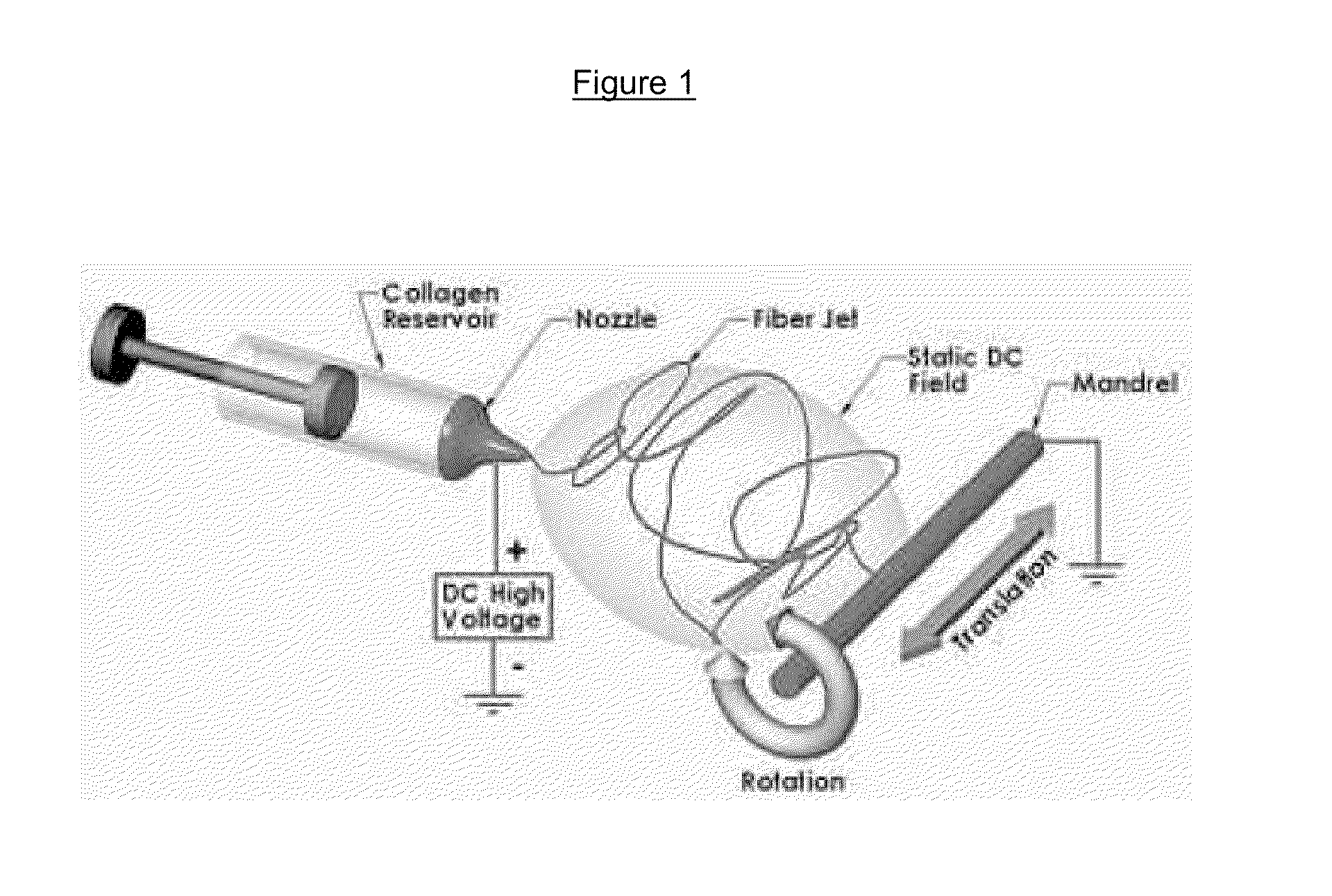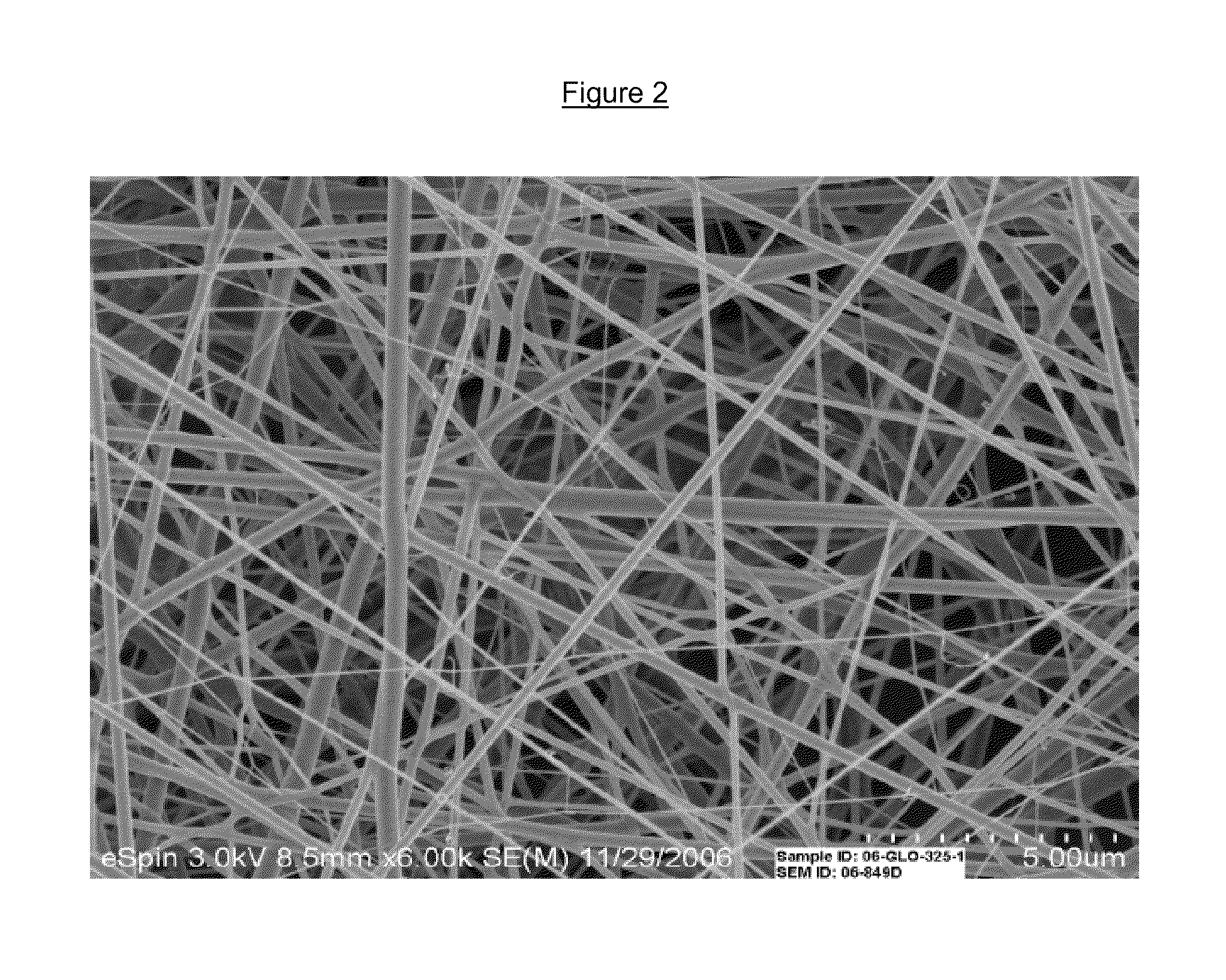Drug delivery compositions and methods using nanofiber webs
a nanofiber and composition technology, applied in the direction of drug compositions, peptides, sense disorders, etc., can solve the problems of reduced absorption of systemic medications, increased risk of severe complications of systemic medications, and limited treatment options for severe uveitis (ocular inflammatory disease)
- Summary
- Abstract
- Description
- Claims
- Application Information
AI Technical Summary
Problems solved by technology
Method used
Image
Examples
example 1
[0040]I. Method of Manufacture: The aspirin (acetylsalicylic acid, ASA) was incorporated into polyurethane in 3 different concentrations: 1%, 5%, and 10% ASA by mixing polyurethane (PU) and respective w / w concentrations in N,N-dimethylformamide (DMF) solvent. The mixed polymer solution was injected via a syringe pump and electrospun onto a grounded drum under high dc voltage under usual conditions.
[0041]The method of drug incorporation was similar to the incorporation of itraconazole and ketanserin into segmented polyurethane as detailed in the article by G. Verreck et al., “Incorporation of drugs in an amorphous state into electrospun nanofibers composed of a water-insoluble, non-biodegradable polymer.” J Controlled Release. Vol 92, 3, 30 Oct. 2003, 349-360.1-4
example 2
[0042]The corticosteroid triamcinolone acetonide (TA) was incorporated into the biodegradable polymer poly (lactide-co-glycolide) [PLGA] by electrospinning as described in Example 1. A polymer solution of 0.11% TA was mixed with 9.01 gm PLGA in 2 ml tetramethylfuran (TMF) and 15 ml DMF (˜36.25% polymer). The polymer-drug solution was injected via a syringe pump and electrostatically spun at 16 and 24 kV. The formed nanofibers were collected as a non-woven fabric.[0043]1. Verreck G, Chun I, Peeters J, Rosenblatt J, Brewster M E. Preparation and characterization of nanofibers containing amorphous drug dispersions generated by electrostatic spinning. Pharm Res. May 2003; 20(5):810-817.[0044]2. Brewster M E, Verreck G, Chun I, et al. The use of polymer-based electrospun nanofibers containing amorphous drug dispersions for the delivery of poorly water-soluble pharmaceuticals. Pharmazie. May 2004; 59(5):387-391.[0045]3. Verreck G, Chun I, Rosenblatt J, et al. Incorporation of drugs in an ...
PUM
| Property | Measurement | Unit |
|---|---|---|
| thickness | aaaaa | aaaaa |
| diameter | aaaaa | aaaaa |
| diameter | aaaaa | aaaaa |
Abstract
Description
Claims
Application Information
 Login to View More
Login to View More - R&D
- Intellectual Property
- Life Sciences
- Materials
- Tech Scout
- Unparalleled Data Quality
- Higher Quality Content
- 60% Fewer Hallucinations
Browse by: Latest US Patents, China's latest patents, Technical Efficacy Thesaurus, Application Domain, Technology Topic, Popular Technical Reports.
© 2025 PatSnap. All rights reserved.Legal|Privacy policy|Modern Slavery Act Transparency Statement|Sitemap|About US| Contact US: help@patsnap.com


